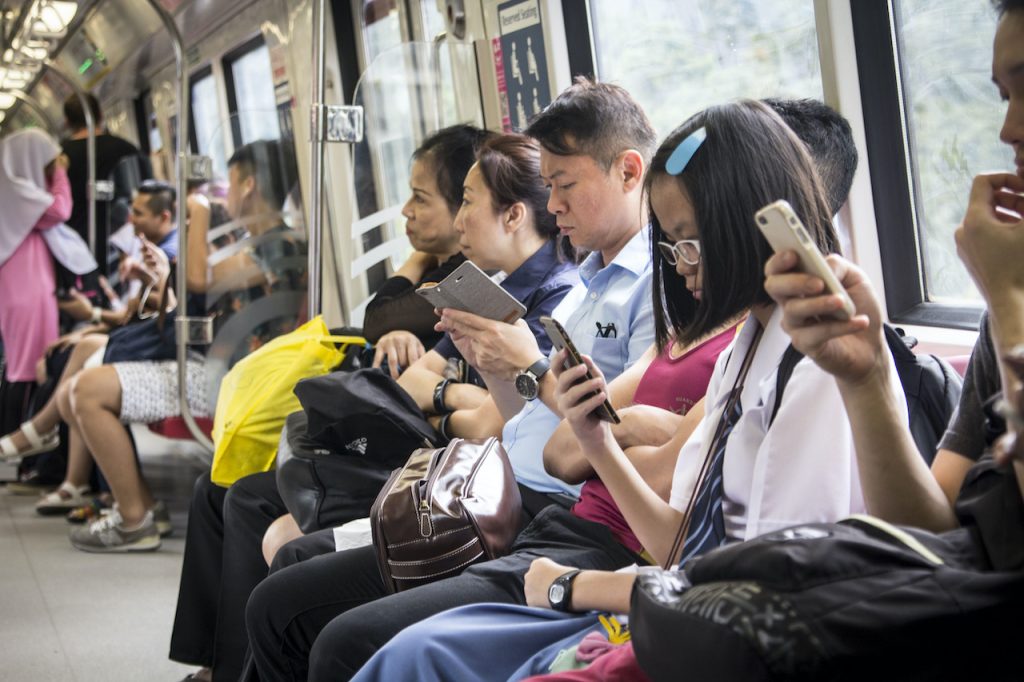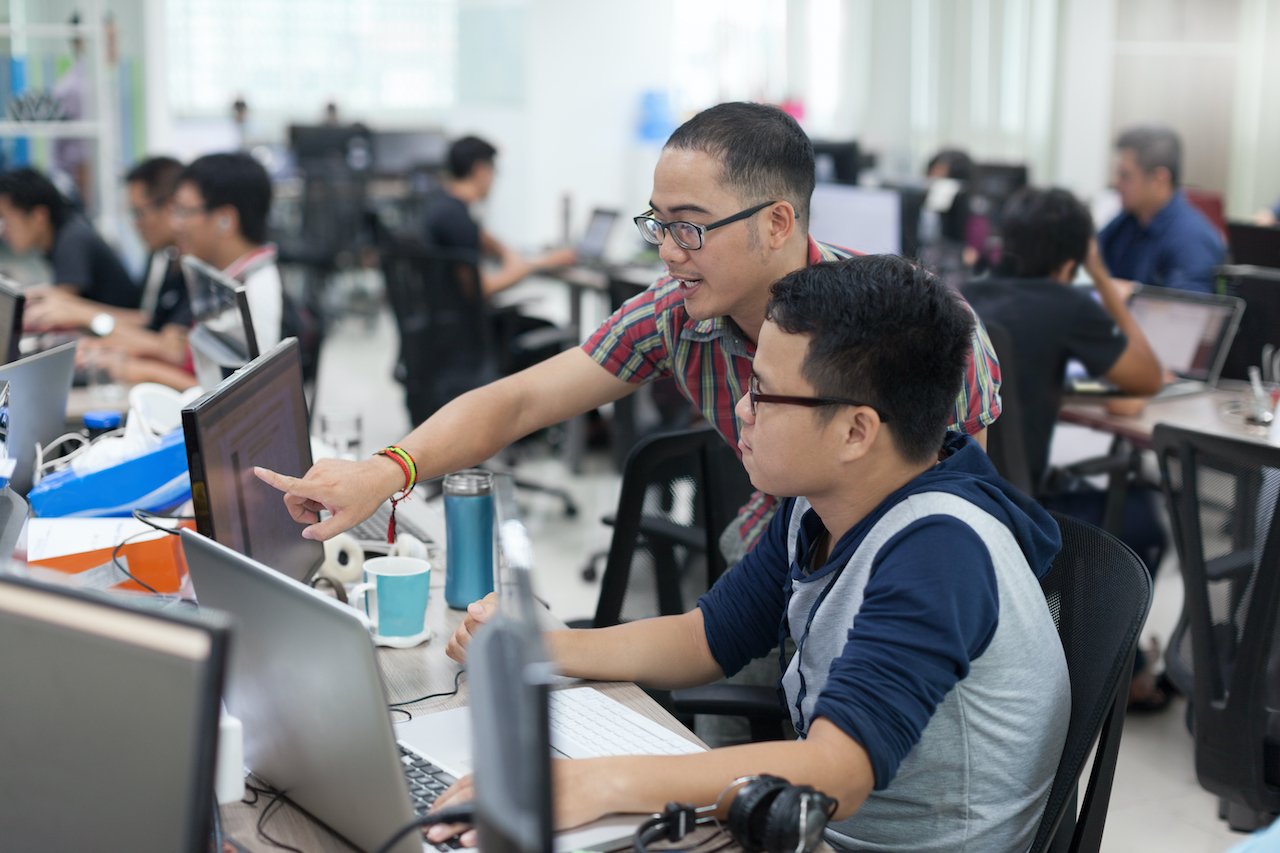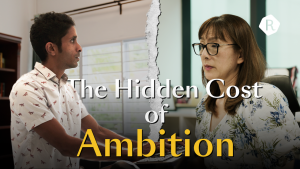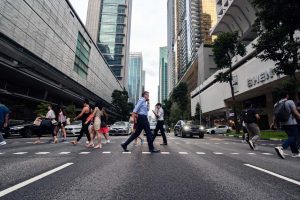What Is Web Accessibility?
It’s that time of the month again.
Salaries are in, bills have to be paid, you owe Jed lunch money from 3 months ago. Time to fire up the old bank account, whiz your moolah away over the internet—but what’s that?
Your menus are missing (if you can’t use a mouse). There’s no way to select your accounts from as a source of funds transfer (with just a keyboard). Whatever you’re trying doesn’t work. The app keeps telling you to swipe right to complete the transfer (but how can you, when you navigate it with voiceover software?).
If you have mobility issues—and that runs the gamut from arthritis to muscular dystrophy to a broken mouse—you won’t be able to use a mouse.
If you are visually-impaired or just have a broken screen, chances are you’ll navigate the web with just a keyboard and a screen reader.
When websites are not built with universal design in mind, large parts of the web are rendered inaccessible to those who cannot use it the way we assume everybody else does.

But as you click and scroll, the voice also reads you an audio map of the webpage you are on.
At the Rice Media banner, it might say “visited heading level one link. Rice.” Tab left, onto the category links, “Same page links. Link food. Food button menu collapsed. Link culture. Link current affairs. . . List end. Search region.”
It reads title elements, navigation and regions, different levels of headings and so on—things sighted people don’t need names for, and take for granted because so much of the internet is visually accessible to us.
Now let’s say you want to return to the previous page of a form. There’s the back button. You click on it, and it takes you right back. Easy, right? But if you’re using screen reading software, and the website elements haven’t been properly labelled in code, when you navigate to the back button, instead of reading “button back” it now just announces “button”.
What does this button do? Who the hell knows?
Maybe a pop-up’s popped up on your screen. You click on the X button to close it. But what happens if there’s no X button? For screen reader users, if a ‘close’ element has not been coded in, the pop-up is effectively silent. There is no way for the software to read it, and blind users can’t banish the pop-up.
We like to think of technology—in particular, the internet—as an arbiter of freedom and equity, but in many ways, it is also equally inaccessible to persons with disabilities (PWDs).
The majority of blind people are employed to work with a computer, but inaccessible sites contribute to them losing, on average, 30.4% of time. This time costs so much: promotions and pay rises, company productivity, the public perception that PWDs are not valuable company assets and should not be hired.
Don’t get me wrong—I’m not here to trash tech. It’s already an indispensable facet of life for so many, and done right, it can be a great boon for independent living.
But focusing exclusively on the benefits of technology for PWDs risks obscuring how some of our most-used technologies are, in fact, badly designed for persons with disabilities.
For persons with disabilities, an inaccessible web is more than just a source of frustration.
This has a direct bearing on PWDs’ participation in the workforce.
In Singapore, one of Asia’s most hyper-connected economies, very few people can afford to apply for a job without some sense of digital literacy. And the more tech-savvy you are, the better your job prospects. Where does that leave PWDs without equitable access to the web?
The majority of blind people, for instance, are employed to work with a computer, but inaccessible sites contribute to them losing, on average, 30.4% of time. And that time costs so much: promotions and pay rises, company productivity, the public perception that PWDs are not valuable company assets and should not be hired.
Web accessibility—and this also includes mobile applications—would also give those who need it tools to live more independently: order food, work from home, pay last-minute bills at 11:59 PM instead of 12:01 AM.
“The KFC site is kind of a nightmare if you try navigating with a screen reader,” explains software engineer Dickson Tan, who is blind. “There is a modal that asks you to enter some information that doesn’t even appear. Screenshots of promotions without any meaningful alt text abound.”
“Oh,” he adds, “navigating online banking sites. Yes, so, so much hate.”
Civil servant Amanda Chong, who is also blind, chimes in, “[Some] menus only appear on mouse hover so that it ranges from difficult to impossible to navigate them if you’re not a mouse user. Sometimes they require you to swipe right to confirm the transfer in funds but I can’t do the swiping motion with voiceover on. It would be much easier if they simply had a button to click, then I could double-tap to activate it.”

“No privacy for financial matters.”
Job security and social independence have always been the things we worry about most for persons with disabilities.
An accessible web won’t solve everything, but it will bolster both at one go.
But most of all, a failure to design for an accessible internet—as Singapore rapidly digitises into a Smart Nation—is a new setback for a community whose marginal status has already been well-documented. I worry that as we grow more attached to our digital lives, the rift in technological inequality will grow.
But the deeper I dug, the more jaded I got about the push for web accessibility in Singapore.
Right now, it’s a lonely one.
Of the few private companies that design for accessibility online, a majority of them are global conglomerates: Microsoft, Apple, IBM. Only one of them is local to Southeast Asia, and that is Grab.
There are only a handful of people who have highlighted the need for web accessibility here, but they have largely flown under the radar.
When I asked Dickson, who has a hand in accessible coding at a government agency, about the state of web accessibility in Singapore, he sighed. “I’m pretty jaded by this point, so my short answer is that I don’t really see any noticeable improvement.”
Is it because web accessibility guidelines are not mandatory here?
That’s partly it, he replied.
In the United States, under the Americans with Disabilities Act, web accessibility is a legal requirement for state and local governments, as well as certain private organisations. In the UK, the Public Sector Bodies (Websites and Mobile Applications) (No. 2) Accessibility Regulations 2018 requires all civil agencies’ websites to be made fully accessible. Similarly, the EU’s 2016 Web Accessibility Directive governs online public sector services.
Singapore has no legally-binding equivalent.
Comprehensive disability legislation would make such laws easier to pass, but it has not yet been put in place. The closest thing we have to a legislative framework for disability policy in Singapore is the Enabling Masterplan (2017-2021), which recommends, but does not instruct; it guides, but does not legislate.

When I asked two computing students if their modules taught accessible code, both said no. The curriculum tends to focus on industry-specific requirements rather than user-oriented design, and even when parts of accessible code are taught, that implication is not made clear to students.
Brian Ho, a Computer Science major at NUS, said that coding elements like labelled form elements, alternative text for images and HTML5 sectioning elements were covered in class, “but it’s more for better separation of code, [people have] not really mentioned about it helping accessibility, if it does.”
Even among the few who write accessible code, compulsory Digital Service Standards in the public sector, Dickson points out, are “perceived as a standard to be complied with. People don’t really understand how this is helpful.”
A third reason why web accessibility has so little traction in Singapore is because those who need it most are also economically marginal: we just don’t have enough persons with disabilities in the workforce for web accessibility to become a pressing issue.
Part of that is just the way things are. PWDs of working age make up just 3.4% of the resident population and many of them will remain outside the labour force due to poor health. Realistically, we will never have enough persons with disabilities in the workforce for accessibility to become a significant movement in Singapore.
But there are also far fewer PWDs in open employment than there should be. Even when we exclude PWDs who are outside the labour force, unemployment among those who are disabled is unduly high. MOM’s Comprehensive Labour Force Survey in 2018 puts the resident unemployment rate for PWDs at 12.9%—that’s nearly 6 times higher than the overall rate of 2.2% in the same year. Look, those are not people who can’t work. Those are people who are actively looking for a job, but cannot find one.
The problem with disability is that it’s extremely, extremely unrelatable.
A high rate of unemployment has a second consequence for the web accessibility movement here: there are too few disabled people who are directly involved in its work. And by direct involvement, I mean not just independent advocates and disability organisations, but also civil servants, web coders, lecturers and UX designers.
Crucially, that makes for too few PWDs in the tech sector. Across the board, high barriers of employment discourage PWDs from pursuing careers in private tech companies where competition is the name of the game. And yet one of the fastest ways to enact change is to get more persons with disabilities to work alongside other coders for whom accessible code quickly becomes that much more important.
We don’t always see the need for accessibility, but it is there.

So where do we go from here?
I don’t know.
I know that people have been asking for comprehensive disability legislation for a while now, but it hasn’t happened. To legislate something as big as this, you need political will, which we don’t have. When I put this point to Jonathan Tiong, an NUS student with spinal muscular dystrophy, he said quite dryly, “There’s very rarely political will to improve the situation.”
“To those making the decisions, it’s a cost-benefit thing. Unfortunately, if we look at the objective figures, it incurs costs to make something accessible, but it only helps a small number of people, so such changes are rarely seen as being worthwhile.”
And when it comes to pushing for web accessibility to be taught in school and featured at work, the people I spoke to often said, I think it’s because people just don’t know. We’ve got a glut of awareness campaigns, it’s true, but they often spotlight ability rather than inaccessibility.
But maybe, on a deeper level, visibility is not the issue.
“We see them, for sure,” said a friend who’s done a student project on disability awareness. “I think empathy is the issue. If we’re talking about trying to get the general student population to empathize, it’s probably a ratio of like 1 to what a few hundred? Thousand?”
“The problem with disability is that it’s extremely, extremely unrelatable. The closest that comes to it is empathy for the average man on the street, and even then that’s super hard.”
There is so much that works against web accessibility that change seems impossible. And it takes a team effort: politicians, teachers, coders, web designers, colleagues, managers, you.
But don’t take it from me. Brighter-eyed PWDs say that there is always something to be done.
Because good code is often accessible, one way to improve web accessibility is to build up the capability of software engineers here, says Amanda. Have more audit checks. Reward good examples. How about a website to shame inaccessible sites?
“Another thing that can help,” suggests Gojek operations manager Peter Liem, who has hearing loss, “is to raise the salary cap for the Enabling Employment Credit, especially if the government wants to help PWDs move into the tech sector. The earning potential is a lot higher, and there’s a lot of tech to help complement their needs and talents.”
The Enabling Employment Credit (EEC) is a government scheme that offsets a proportion of PWDs’ wages up to a monthly income of $4000.
“Software developers get paid a minimum of $5000, so PWD software developers will be at a disadvantage if there is no incentive for employers to help kickstart their careers.”
And to combat a lack of awareness, Jonathan called on the disabled community to take on a more active role in spotlighting their own needs.
“Disabled people will have to advocate for ourselves too rather than letting well-intentioned able-bodied people advocate on our behalf. Ultimately, disabled people are the ones directly impacted by disability issues, so it’s only right that we are represented.”
“We’re getting there,” he said. “Slowly.”
Read Dickson’s pretty cool guide to web accessibility here.






